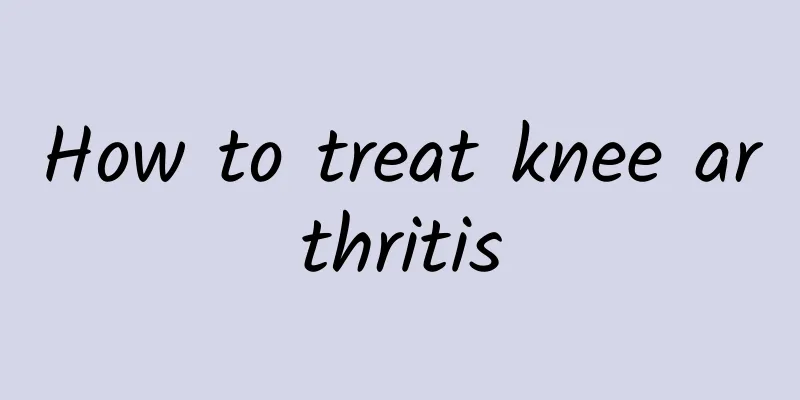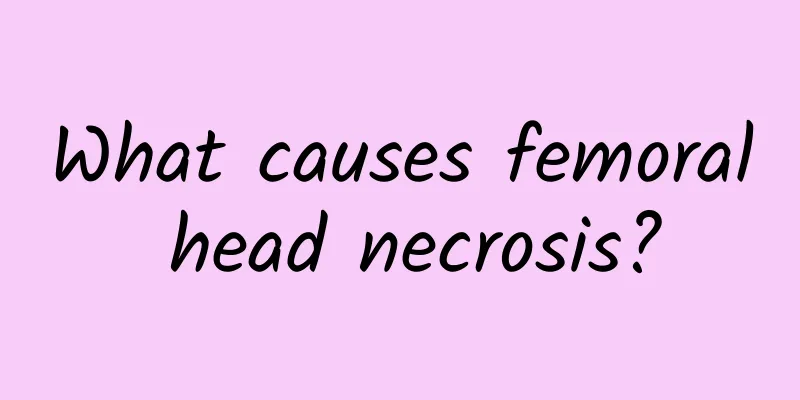Cervical spondylosis causes nerve pain in the head

|
Cervical spondylosis may compress the cervical nerves and cause nerve pain in the head. This is because cervical degeneration can cause nerve damage or blood circulation obstruction, and timely treatment is required to avoid worsening symptoms. Treatment methods include conservative treatment, drug relief, and surgical intervention. In addition, improving lifestyle can also help relieve pain. 1 Cause Analysis The main reason for cervical spondylosis to cause nerve pain in the head is degenerative lesions of the cervical spine. With age or long-term bad posture, the cervical spine may degenerate, the intervertebral disc may protrude, or bone may grow. These lesions will compress the nerve roots in the neck, causing abnormal nerve signal transmission and causing referred pain in the head. Neck muscle tension or long-term use of electronic devices with the head down, which leads to local blood circulation obstruction, may also become a trigger, making it easier to aggravate head discomfort. 2 Treatment methods For neuralgic headaches caused by cervical spondylosis, the following treatments can be used according to the severity: Drug relief: You can take anti-inflammatory analgesics such as ibuprofen or aspirin under the guidance of a doctor to relieve headaches and inflammation. If there are neurological problems, you can choose neurotrophic drugs such as methylcobalamin. Physical therapy: You can try hot compress, neck traction, acupuncture or massage to relieve muscle tension, promote local blood circulation, and relieve headache symptoms. However, massage should be performed by professionals to avoid accidental injury to nerves. Surgical treatment: For cases with severe symptoms and obvious cervical nerve compression, surgical intervention, such as cervical spinal canal decompression or discectomy, can be considered to restore normal nerve function. The surgery uses minimally invasive technology to reduce the difficulty of postoperative recovery. 3. Improve your lifestyle In addition to direct treatment, it is also important to develop healthy lifestyle habits. For example: Adjust your posture: Keep the natural curvature of your cervical spine while working, and avoid lowering your head or bending over a desk for long periods of time; you can stand up and move around for 5-10 minutes every hour. Scientific exercise: Choose gentle neck stretching exercises or yoga movements to avoid excessive exercise that causes burden on the cervical spine. Reasonable diet: Eat more foods containing calcium, vitamin D and B vitamins, such as milk, eggs, and deep-sea fish, to protect bones and nerve function. Active response can relieve symptoms and reduce the pain caused by cervical degeneration. If the headache is severe or does not ease for a long time, please seek medical attention in time, use imaging examinations to determine the extent of cervical spondylosis, develop a more specific treatment plan, and avoid worsening of the condition. |
<<: How to treat nonspecific costochondritis effectively
>>: Why does my knee hurt when I play badminton?
Recommend
Causes of femoral head necrosis
The causes of femoral head necrosis mainly includ...
Symptoms of tuberculous lymphadenitis
The symptoms of tuberculous lymphadenitis can be ...
Can perianal abscess be cured?
Perianal abscesses can be cured by radical surger...
Do I need to do mammography for breast cysts?
Whether a breast cyst needs to be examined by mam...
Taoist method of treating breast hyperplasia
Taoist methods of treating breast hyperplasia inc...
Can I take vitamin B6 if I have mastitis?
It is okay to take vitamin B6 in moderation for m...
Is a 1 cm breast cyst serious?
A 1 cm breast cyst is usually not serious, but fu...
How to read urine analysis report
Urinalysis report is a window for us to understan...
What to do if you have a cervical aneurysm
Aneurysm is a relatively serious condition that m...
Causes and treatments of cystitis
Cystitis is usually caused by infection. If the s...
Treatment of burns based on TCM differentiation of symptoms and signs
Treatment of burns based on TCM differentiation o...
Can neonatal anal atresia be cured?
Neonatal anal atresia is treatable. In most cases...
Perianal abscess one week after surgery
One week after perianal abscess surgery, patients...
How to make breast cyst disappear
To make breast cysts disappear, you first need to...
Hypersecretion of mucous glands in the pharynx
Hypersecretion of laryngeal mucous glands may be ...









